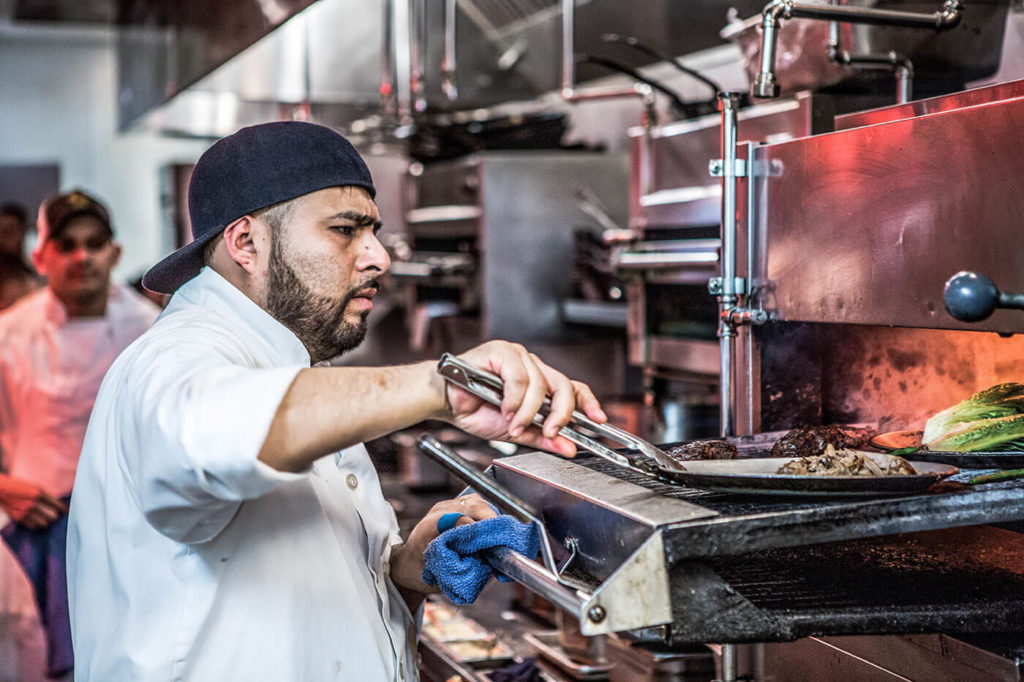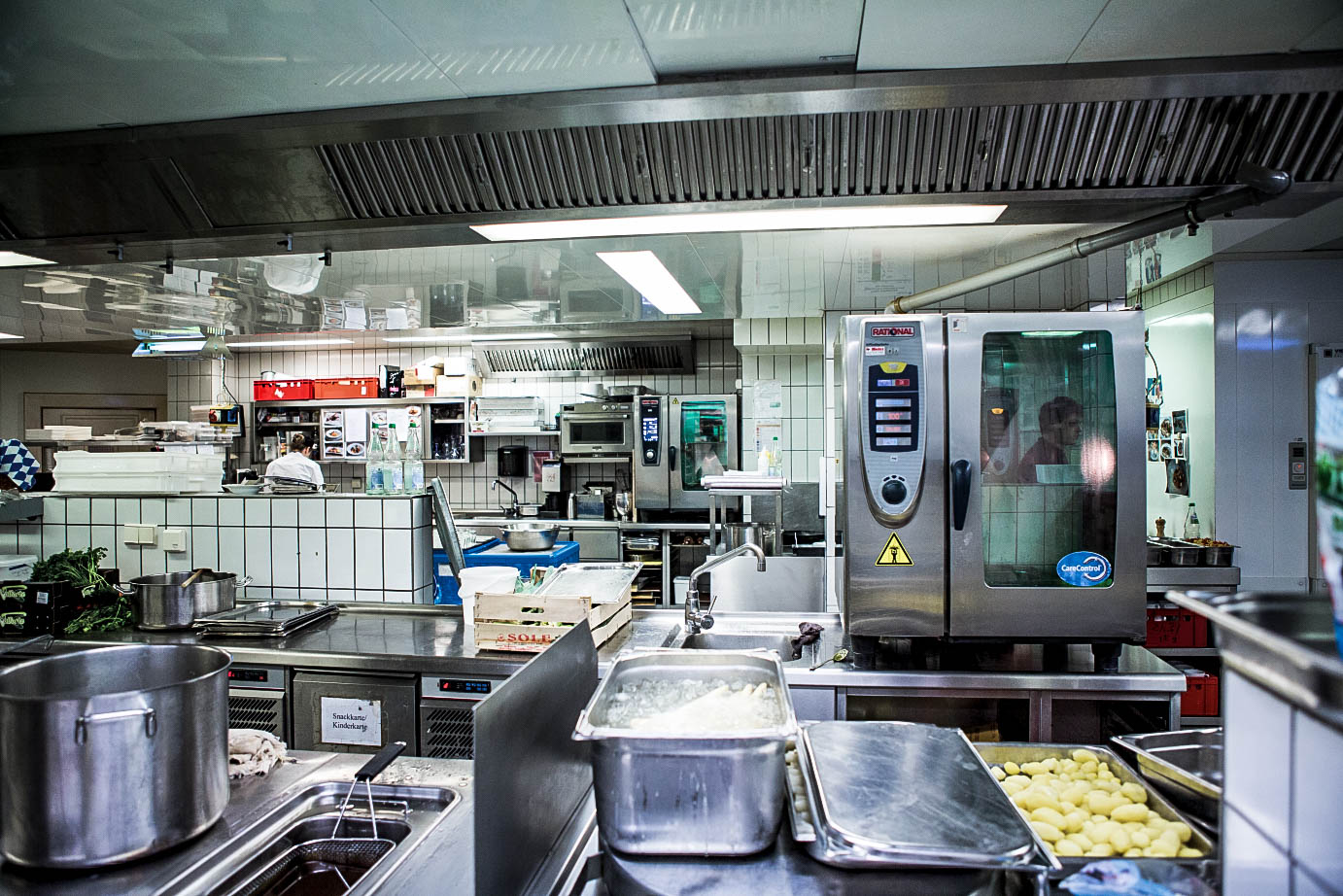You don’t, that’s how. But nowadays, young people have zero incentive to go into those fields. Cook for other people? Serve them? Work until they’re on the verge of a mental and physical breakdown, and then stagger home clutching their pitiful paychecks? Delight in tending to customers’ every need? Wait, which part of that is supposed to sound like a good idea?
“Young people don’t know about all the positive sides of this industry anymore,” laments Anke Büttenbender from Dehoga Hamburg. “Here in Germany, as policy began shifting toward academia and university degrees, a lot of industries were asleep on the job. Ours, too. Now, other countries have started adopting our dual-track occupational training system, but here it’s fallen completely into neglect. Last year, 1.6 percent fewer young Germans entered into on-the-job culinary training programs than the year before. The shortage is increasing all the time.”
Worry: it’s bad all over
The industry is really starting to suffer. According to an international study done by TripAdvisor (2018), German restaurant owners are hurting the most: 70 percent of them see the shortage of skilled staff as their biggest obstacle to staying in business. They put it ahead of terrorism, over-tourism, and international economic crisis. The French, the English, and the Italians don’t see it quite that drastically, but they’re worried as well. Even 37% of US chefs share their views, according to the National Restaurant Association. So now what? Smaller menus, shorter business hours, close up shop, earn even less? That’s one option. Or maybe… become more innovative?
How do we shake professional kitchens out of hibernation? After all, potentially getting to sleep in isn’t the only appealing thing about working in hotels or restaurants. They’re also great places to meet people from all walks of life, people you might otherwise only meet while traveling. Oh, and speaking of that, traveling and experiencing new things are practically part of the job description, because international experience is a must for any up-and-coming professional chef, and highly skilled restaurant staff are in demand everywhere.
So where should Mike head?
Japan: “Waiter!” Click. Send.
In most other parts of the world, service isn’t that much different from in Germany. In Japan? It’s digital. You don’t even have to Google the Japanese translation of “Excuse me, waiter?” At Izakaya, a pub in Japan, diners order by clicking the colorful pictures on the tablets in front of them. It’s quick, easy, and efficient. The food looks tasty, and everyone can see exactly what they’re ordering, which is especially convenient for Tokyo’s throngs of hungry tourists. Plenty of people for Mike to feed, in other words.

Image: In Japan, diners order by clicking the colorful pictures on the tablets
Nowadays, though, a lot of restaurants are trimming not only their front-of-house rosters, but their kitchen crews as well. Everywhere from noodle shops to large restaurants, they’re cutting down on personnel in the name of keeping operations “tight.” The population is also aging rapidly, and hardly anyone is having babies anymore, which means no young trainee chefs anywhere in sight.
Not to mention that young Hodo-Hodo zoku (the Japanese word for millennials) prefer Western food, so a lot of “mom-and-pop” places serving traditional Japanese fare are throwing in the kitchen towel. Among the country’s growing population of singles, snacks are all the rage. Now that the economic crisis is over, Generation Y doesn’t necessarily care about good service—they just don’t want to get their own kitchens dirty— so fast food, concept dining, lunch boxes and supermarket bentos all represent areas of huge growth potential. But alas: even chain restaurants and self-service places are urgently in need of staff!
Which means great prospects for qualified young professionals like Mike, right? Not so fast: even here, in Japan, nobody seems to have hit upon the idea to make hotel and restaurant work more appealing. Sushi bars and noodle houses can’t afford to pay good wages, and training is usually on-the-job. Once young chefs have learned to roll maki or use a stove, a recruiter will be waiting at the door with a slightly better offer, rendering the investment a waste for their “training” restaurants. So much for loyalty.
Of course, German businesses no longer have the luxury of assuming trainees will stay on, either… even though, according to Dehoga, everyone would love to keep them around. Having official culinary or service-staff qualifications practically guarantees they’ll never lack job opportunities.
Those are fantastic prospects for clever young professionals who know how to “sell” themselves to companies and boost their own market value. That’s true in the gourmet kitchens of Europe and Asia… and it’s also true in the US, home of the food chain.
There, the food service industry is super-charged: the economy is booming, culinary taste is expanding—in short, the time is ripe for a dining-culture Renaissance. In fact, a total of 15,145 new restaurants opened in 2016 and 2017 alone.
The US: Competition for kitchen staff
In fact, the American restaurant landscape still has plenty of room for more… if only they had people to work the kitchens. The market’s practically been swept bare. By 2026, estimates show that the US food industry will need around 150,000 new professional chefs. Restaurants who want to hire on an experienced professional find themselves reaching deeper and deeper into their pockets, though.

Image: Competition for kitchen staff
It’s no wonder: culinary school degrees don’t come cheap in the States. Two-year programs can set students back as much as $150,000. Theoretically, graduates come out able to do anything, though they’ve never worked in a restaurant; in practice, they start out in entry-level jobs, bringing home $22,000 to $35,000 a year. For most millennials, paying off a mountain of student debt while starting a career in L.A., New York, or Washington, D.C., is little more than a pipe dream.
Clever restaurant owners and chains like McDonald’s seize the opportunity by promising financial relief; others offer free training at their own colleges. Fittingly, Matt Feifarek with Slow Food Madison calls his “First Course” program a “get-a-job” class: ex-convicts, homeless people, veterans, and the long-term unemployed—people who are still available to work despite the country’s record-low unemployment rate—are guaranteed positions upon completing the gastronomy course. Not necessarily under ideal conditions, of course.
Further information:
Six tips for beating skilled staff shortages
















